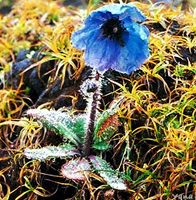
http://www.blueplanetbiomes.org/world_biomes.htm
Each passing day the world changes as our climate begins to change and evolve. We see these different kinds of natural phenomena as self-sustaining, living communities, also called biomes. Biomes have changed and moved many times during the history of life on Earth. More recently, human activities have drastically altered these communities. Thus, conservation and preservation of biomes should be a major concern to all. There are many ways to categorize the types of climates found around the world (Some climate combinations more unique to certain parts of the world) and these biomes exhibits and explores the ancestor/descendant relationships which connect all organisms, past and present.
What is a biome?
A method to classify the Earth’s terrestrial communities as ecological units that correspond with regional climate types. Also seen by writers, artists, as the natural world’s major communities. Though because of human movement and activities, they are been altered from their original states. Farming and irrigation are two examples.
Biome derives from scientists Frederic Clements and Shelford were both studying communities, groups of organisms living together in the same place or habitat. Plants and animals worked together in a self-sustaining unit formulated by S.A. Forbes while studying lakes.
Some places are devoid of life, sandy dunes, new lava flow, and a new glacial lake. A predictable series of plant communities would come to occupy the site, one replacing the other until a final stable assemblage of plants would develop and persist until a major change in the climate occurred. This is called a climax community. Endpoint of succession!
Typically there are 7 Terrestrial Biomes (There are actually more, but these are the 7 main ones):
Tropical Rainforests – Amazon Rain Forest, Ranomafana National Park; Costa Rica
Savannas – Kenya, East and Central Africa, Brazil, Colombia, Venezuela
Deserts – Sahara, Great Basin, Gobi Desert
Temperate Grasslands – Great Plains; US
Temperate (Deciduous) Forests – Basically, the forests of Michigan! Pretty much Northern United States
Boreal Forests – Forests in Stockholm; Sweden, Central Canada
Tundra – Newfoundland; Canada, Arctic National Wildlife Refuge in Alaska
Marine Biomes (Basic Idea, there are so many)
Coastal – zone of transition between land and sea
Coral Reefs – Great Barrier Reef; Australia, Florida Keys,
Continental Shelf – 7.5% of the world’s surface area
Deep Sea – 2/3s of earth’s surface.
Where people live determines what is most important to them.
Alaskan Tundra:
In the Northern most city in the United States, the people of the city follow tradition. The Iñupiat Heritage Center was designed to serve as an inspirational facility to promote and protect Iñupiaq culture, history, and language through exhibits, classes, performances, and educational activities. Things like Whaling, sewing skins to cover boats, carving whale bones, and storytelling. They do not have television, computers or smartphones, but radios to communicate and listen. Whales give themselves to whalers who respect them and treat them properly. As part of this reverence, we offer the whale a clean place to come to. We store our whale meat and blubber in underground ice cellars that we clean out each year before whaling. This their connection to nature and use of their environment. They seek only what is necessary and important to their cultural value and that is keeping their bond to the animal life and adapting to the cold weather for their survival. They know their weaknesses and strengths and yet they have managed to strive as a society for thousands of years on their ancestral lands.
http://www.co.north-slope.ak.us/departments/planning/IHCsite/PoW/index.html
In Northern Siberia/Mongolia:
In a land where the ground is always frozen, one creature has nourished man both physically and spiritually. Author Piers Vitebsky tells Debbie Elliott about The Reindeer People, his book about the Eveny herders of Siberia. They are called the Evenki.
For thousands of years, man and beast have co-existed in a brutally cold environment where human life would simply not be possible without reindeer. Vitebsky has studied them for two decades, emerging with a moving profile of a people "who know how to be." Evenki had moved out from their previous homeland in northeast China and spread for thousands of miles across forests and tundras, swamps and mountain ranges, from Mongolia to the Arctic Ocean, from the Pacific almost to the Urals, making them the most widely spread indigenous people on any landmass. Even today, elders can tell stories of journeys that make young people, tied to their villages and dependent on aircraft, smile with disbelief. The old people achieved this mobility by training reindeer to carry them on their backs and pull them on sledges. The endless succession of short migrations from one camp site to the next, which they have shared with me, gives no more than a glimpse of the power of reindeer transport and of the way in which this creature has opened up vast swathes of the earth's surface for human habitation.


Transportation



.jpg)



No comments:
Post a Comment